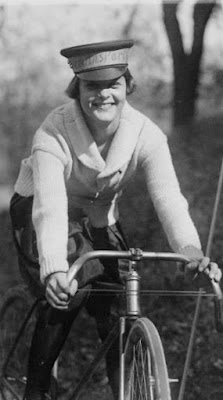As you’ve no doubt heard by now, last month marked
forty years since the release of Patti Smith’s album Horses.
I was a senior in high school then. It semed that my classmates fell into one of
three categories: the ones who loved it
and didn’t want it to end, the ones who were looking forward to college or whatever
else they were going to do after graduation, and those who just couldn’t wait
to get out.
Those of us in the third category were, in one way
or another, the class “geeks”. Most of
us were bookish; nearly all of us had some interest or talent that wasn’t
fashionable in that high school where the unofficial motto seemed to be, “If you
can’t f*ck it, smoke it or drive it and it ain’t Led Zep’, it ain’t worth
it.” More than a few of us read and/or
wrote poetry or songs we would perform only for very close friends (who,
naturally, were as introverted as we were); we loved poets like Patti who, we
felt, told the truth—at least as we understood it at the time.
I had been writing stories, articles for the school
newspaper and stuff I can’t categorize—most of which I lost or destroyed along
the way from then to now. Around that
time, I started writing what some might call “free verse” poetry, or simply
chopped-up sentences. Whether or not it
was “any good” (Let’s face it, how much of anything that we do at that age
is?) is, I realize now, not the point, any more than whether or not I had the
capability of becoming a world-class racer did or didn’t make the amount of
cycling I was doing “worth it”. Yes, I
wrote and rode—as I do now—because I enjoyed those activities. But more important, I could not envision life
without them.
Actually, that’s not quite right. I did those things, not only for pleasure,
but also for survival. And, in those
days, the work of a poet like Patti Smith or Gregory Corso or Arthur Rimbaud
was sustenance for “the journey”, whatever that might be.
I think what I really loved and admired about Patti
Smith, though, was something I couldn’t articulate at the time, or for a long
time afterward. Now I’ll express it as
best I can: She did something interesting
and unique, whatever its flaws (which I only vaguely understood at the time)
and did it on her own terms. At a time
when I still did not have the terms or tools to articulate, let alone embody,
the “differentness” I saw in myself—which others, especially the adults in my
life, misunderstood as “rebelliousness”—Patti Smith gave us an image of how someone can become someone only he or she can become.
When Horses came out, she was often described as
“androgynous” because of the way she was dressed, and the way she carried
herself, in the photo on the album’s cover.
The truth, I realized even then, was that she was actually showing
that it was possible to be a woman in a way that didn’t fit into the boxes constructed
by the governing institutions and individuals of our society.
She upset those authority figures in much the same
way as the women who abandoned their corsets and hoopskirts for shorter
skirts or “bloomers” so they could ride bicycles in the 1890’s. Most of those
women weren’t consciously rebelling; they simply to wanted to live their lives
as they saw fit.
It might take a long time but, ultimately,
independent spirits who realize their visions change the world and inspire us
while those who try to suppress such spirits or the change they engender are
forgotten or even vilified. Most people,
at least in the industrialized countries, think nothing of women wearing pants
or skirts that don’t constrict their movement, and of working in what were once
considered in “men’s” jobs.
Knowing what I’ve just said, are you surprised to
see this image of Patti Smith?:






















